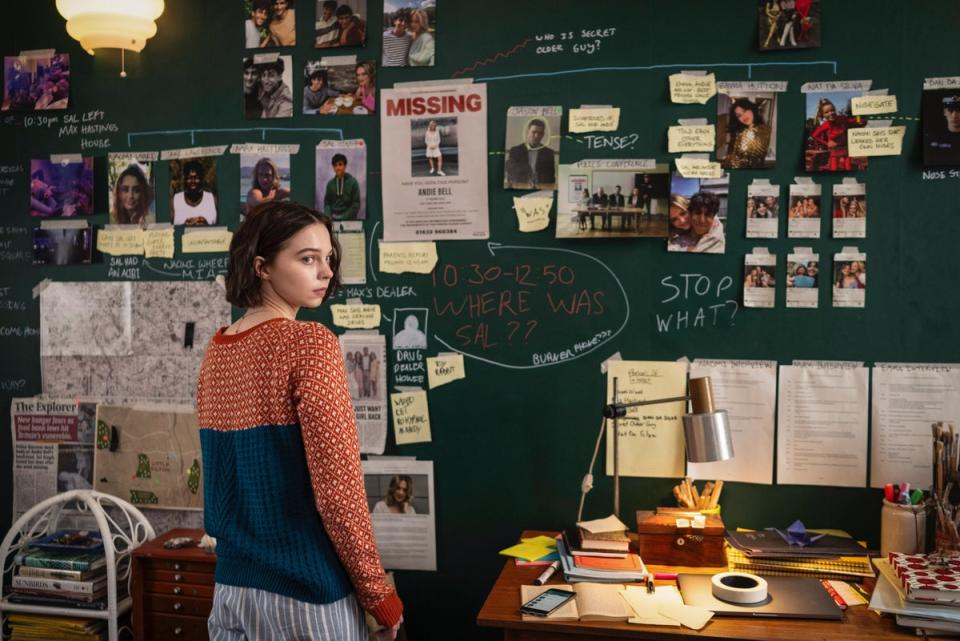A Good Girl’s Guide to Murder review: Moreish, twisty mystery is like Famous Five meets Pretty Little Liars
Pip, 17, is the sort of teenager who has never given her parents cause to worry. She doesn’t drink, seems physically incapable of telling even the whitest of lies, and spends her spare time ranking Cambridge colleges based on their acceptance rates and famous alumni. In fact, it’s only the prospect of gaining some extra Ucas points that drags her into the messy business of investigating a killing in A Good Girl’s Guide to Murder, the BBC’s likeable, absorbing drama based on Holly Jackson’s bestselling young adult novel.
This must surely be the only mystery story that uses the Extended Project Qualification – essentially an add-on where A-level students write a mini-dissertation about a chosen subject – as a plot device. Pip, played by Wednesday star Emma Myers, decides to ditch her initial idea of writing about Gothic novels in favour of diving into the disappearance and presumed death of Andie Bell (India Lillie Davies). Andie was a popular older pupil at Pip’s school who went missing five years ago; her boyfriend Sal (Rahul Pattni) seemed to confess to her murder shortly afterwards, then died by suicide.
These two deaths still haunt the sleepy countryside town of Little Kilton – all thatched cottages and rows of pastel-painted shop fronts. Pip’s thesis is that “good guys don’t kill people”, and Sal, she believes, was very much a good guy. Soon, she turns her bedroom wall into an evidence board covered in Instagram print-outs connected by red string, and recruits Sal’s younger brother Ravi (Zain Iqbal) as her fellow detective. Her mum and dad aren’t exactly thrilled. Anna Maxwell Martin and Gary Beadle are a delight here as the parents, bringing comic relief and, later, some emotional heft.
Pip’s investigation style – and in fact her character as a whole – grates a little as the series opens. She has a bracingly direct approach when it comes to interrogating her potential suspects about the case, which verges on self-righteousness. Sometimes she seems to view the case as a puzzle to be solved, an intellectual exercise rather than an awful tragedy. But as the episodes go on, she grows in self-awareness (and Myers’ performance becomes less mannered, more empathetic), and makes enough mistakes of her own that she stops seeing the case in such black and white terms.

As Pip gets deeper and deeper into the case, the series takes us on a whirlwind tour of teen mystery drama tropes. There’s the spooky camping trip in a desolate wood, an attempt to speak to spirits using a very rudimentary take on an Ouija board, and even a touch of Skins-style bacchanalia when she and her friends attend a secret party in a cave (the latter feels a little bit like a CBBC version of Euphoria, with Pip improbably quizzing an allegedly dangerous drug dealer about his operations).
But although some of these component parts might feel familiar, the story is pacily told and filled with enough twists to make A Good Girl’s Guide to Murder moreish viewing. Think The Famous Five meets Pretty Little Liars, as told by Agatha Christie: it’s a combination that shouldn’t really work on paper, but will have you hooked all the same.


